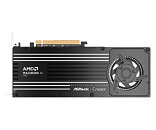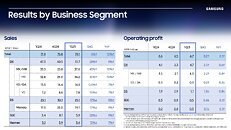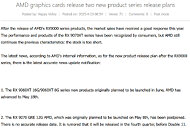
AMD Radeon RX 9070 GRE Tested, Fills Gap Between RX 9060 XT and RX 9070
AMD released the China-exclusive Radeon RX 9070 GRE in May, and ComputerBase.de caught hold of a Sapphire Pulse branded RX 9070 GRE card to test. While the RX 9060 XT specs sheet reads as being exactly half of the RX 9070 XT, the RX 9070 GRE is configured to be three quarters of it. It's based on the same 4 nm "Navi 48" silicon as the rest of the RX 9070 series, but is configured with 48 compute units out of the 64 present, and comes with 12 GB of memory across a 192-bit wide GDDR6 memory bus, in place of the 256-bit wide one that the RX 9070 and RX 9070 XT come with. With 48 CU, the RX 9070 GRE has 3,072 stream processors, 96 AI accelerators, 48 RT accelerators, 192 TMUs, and 96 ROPs. The Infinity Cache size is reduced to 48 MB. The card comes with the same 220 W TBP as the RX 9070.
Testing by ComputerBase.de finds that despite its reduction in compute units and memory, the RX 9070 GRE is still a 1440p-class GPU, and a significant upgrade over the RX 9060 XT 16 GB and the NVIDIA GeForce RTX 5060 Ti 16 GB. Averaged across 13 game tests, at 1440p, the RX 9070 GRE tests 28.4% faster than RX 9060 XT 16 GB, 22% faster than RTX 5060 Ti 16 GB, and 11% faster than the previous-gen RX 7800 XT, and 5% faster than RTX 4070. The current-gen RTX 5070 is 9% faster, RX 9070 is 14% faster, and the current flagship RX 9070 XT is 29% faster. This makes the RX 9070 GRE an interesting SKU that's at the intersection of various price-performance combinations within the 1440p class. In the Chinese domestic market, the RX 9070 GRE is priced slightly higher than the RTX 5060 Ti 16 GB, but lower than the RTX 5070, making it a good value proposition. Find more test results and insights in the source link below.
Testing by ComputerBase.de finds that despite its reduction in compute units and memory, the RX 9070 GRE is still a 1440p-class GPU, and a significant upgrade over the RX 9060 XT 16 GB and the NVIDIA GeForce RTX 5060 Ti 16 GB. Averaged across 13 game tests, at 1440p, the RX 9070 GRE tests 28.4% faster than RX 9060 XT 16 GB, 22% faster than RTX 5060 Ti 16 GB, and 11% faster than the previous-gen RX 7800 XT, and 5% faster than RTX 4070. The current-gen RTX 5070 is 9% faster, RX 9070 is 14% faster, and the current flagship RX 9070 XT is 29% faster. This makes the RX 9070 GRE an interesting SKU that's at the intersection of various price-performance combinations within the 1440p class. In the Chinese domestic market, the RX 9070 GRE is priced slightly higher than the RTX 5060 Ti 16 GB, but lower than the RTX 5070, making it a good value proposition. Find more test results and insights in the source link below.




























































